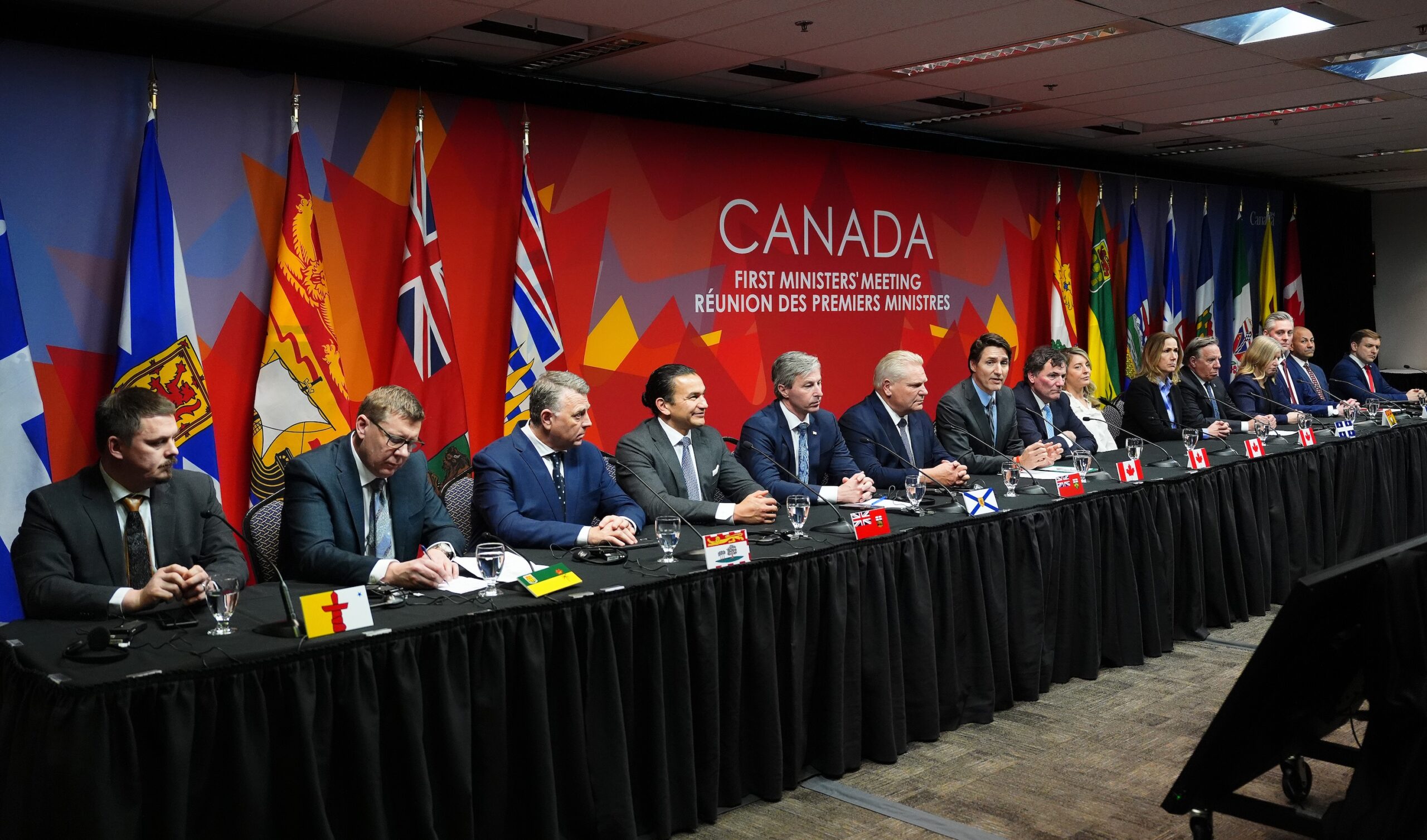All four main parties have announced a full slate of candidates, with the Ontario Greens finishing their nominations this week. Liberal leader Bonnie Crombie and the NDP’S Marit Stiles have both made several announcements in the first two weeks of the election but so far, have not provided funding details. In press conferences on Wednesday, Crombie and Stiles both said that they will release their party’s full platform soon. The short campaign has all three parties needing further time to release their fully costed platforms.
Meanwhile, Green Party Leader Mike Schreiner is the first and only leader to release a fully costed platform. The Greens are targeting rural ridings in Ontario, arguing that the other three parties are more focused on bigger cities like Toronto.
The Leaders’ debates are coming up – they are scheduled for Valentines Day afternoon and the Family Day evening.
As Ontario reaches the halfway point of the election, recent polling shows the Progressive Conservatives (PCs) maintaining a strong lead at 45%, followed by the Ontario Liberals at 27%, the Ontario New Democrats (NDP) at 18%, and the Ontario Green Party at 6%. If the Ontario Liberals continue to draw support from the NDP, they could secure their position as the official opposition, but this is an uphill battle for them. The reason is that the NDP’s voter base is more efficiently distributed, which often translates into a higher seat count despite lower popular vote projections. Current projections indicate that the Ontario Liberals may achieve 12 seats, while the Ontario NDP is expected to secure 11 seats.
According to a new Nanos poll, 28% of Ontarians consider healthcare and the economy to be the most critical issues influencing their voting decisions. So, let’s examine the health care platforms of each party leader.

Key healthcare issues
The province currently has an estimated two million residents without a family physician. All three major political parties have released plans to address this issue, committing up to $4 billion to reform health care secure a family doctor for all Ontarians by 2029.
Progressive Conservatives (PCs)
Before the election, the PC government pledged $1.8 billion over four years to ensure that two million Ontarians are rostered with a family doctor or nurse practitioner by 2029. They have also appointed Dr. Jane Philpott, the former federal Liberal health minister, to lead reforms in the primary care system, integrating teams of doctors, nurse practitioners, and other healthcare professionals within a single facility.
Ontario NDP
The NDP has promised to connect every Ontarian with a family doctor or nurse practitioner, allocating $4.05 billion over four years. Their plan includes recruiting 3,500 new doctors and reducing administrative burdens on physicians, allowing them to spend more time with patients. The party also aims to enable over 13,000 internationally trained doctors—who are currently unable to practice in Ontario—to enter the workforce by expanding residency opportunities in medical schools.
Regarding nursing, the NDP proposes legislating safer nurse-to-patient ratios, eliminating the reliance on private nursing agencies, and hiring at least 15,000 nurses over three years, at a cost of approximately $1.5 billion.
Ontario Liberals
The Liberals plan to invest $3 billion over four years to provide every Ontarian in need with a family doctor. Their strategy includes hiring more than 3,100 new doctors, establishing two new medical schools, increasing medical school admissions, and expanding residency placements. Additionally, they propose a $250 million fund to retain doctors who have left their practice or are nearing retirement. To support foreign-trained doctors, the Liberals would allow 1,200 internationally trained physicians to practice in Ontario and offer a $150,000 incentive for Canadian doctors and nurses working in the U.S. to return and practice in the province.
Premiers’ meeting in Washington
Tariffs remain a dominant issue in the election despite efforts by the opposition party leaders to shift the focus to the government’s record. Premier Doug Ford’s frequent media appearances on U.S. television and his recent trip to Washington, D.C., are keeping the issue in the spotlight.
Ford and the premiers went to Washington to meet with U.S. lawmakers shortly after President Trump announced a 25% tariff on all steel and aluminum imports, set to take effect next month. As the chair of the Council of the Federation, Ford this week led discussions of provincial and territorial leaders in Washington to advocate for their respective jurisdictions. The 13 premiers are unified in their message: strengthening trade with Canada can help the U.S. compete against China.
Third-party voices: unions taking front and centre
Union support of political parties in Ontario has undergone a significant shift, moving toward the right—a base traditionally aligned with the NDP. In the 1990s, when the Ontario NDP was led by Bob Rae, the party had strong ties to organized labor, with over 40% of its caucus coming from trade unions. However, union support eroded when Rae’s government implemented austerity measures and renegotiated public-sector agreements.
In the 2025 Ontario election, several key unions—including the International Union of Operating Engineers Local 793, the Merit OpenShop Contractors Association, Opcima Local 598, and Unifor Local 29-X—have endorsed PC Leader Doug Ford. The Ontario NDP have support from two notable unions – the International Association of Machinists and Aerospace Workers and Amalgamated Transit Union Canada – but it is a lower count than the Conservatives in contrast.
The unions supporting the PCs cite their commitment to job creation, economic growth, and investment in worker training as key reasons for their support. Government initiatives such as the Skills Development Fund have helped the PCs consolidate union and skilled-trade support—historically a stronghold for the NDP.
The challenge for NDP Leader Marit Stiles is to reconnect with working-class voters and rebuild the party’s relationship with the labor movement to regain its traditional base.
